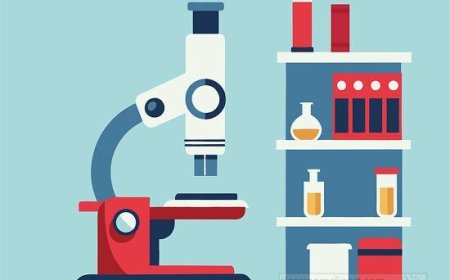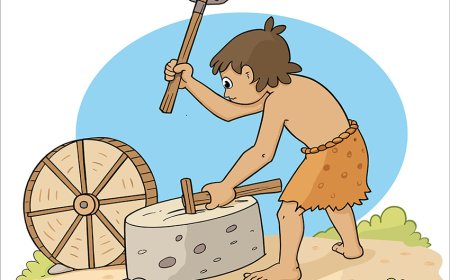George Washington Carver: The Plant Scientist
Learn how George Washington Carver used science, plants, and creativity to help poor farmers, protect the soil, and change agriculture forever
🌱 Introduction: More Than Just Peanuts
George Washington Carver is often called "the peanut man," but he was much more than that. He was a scientist, inventor, teacher, and environmental pioneer who used his knowledge of plants to help poor farmers and improve the land.
Carver discovered hundreds of new uses for crops like peanuts, sweet potatoes, and pecans, but his greatest invention wasn't a single product-it was the idea that science could be used to help people and heal the Earth.
👶 Early Life: From Slavery to Science
George Washington Carver was born around 1864, near the end of the Civil War, in Missouri. He was born into slavery and faced hardship from the very beginning. When he was a baby, he and his family were kidnapped by raiders. He was eventually found and returned, but his mother was never seen again.
He was raised by his former enslavers, Moses and Susan Carver, who supported his desire to learn, even though they had little money.
George was often sick and too weak for hard farm work, so he spent his time exploring nature, studying plants, and teaching himself from books.
📚 A Long Road to Education
George wanted to go to school, but because he was Black, many schools wouldn't let him in. He walked for miles, worked odd jobs, and even lived in barns to pay for school.
Finally, he earned a high school diploma and was accepted into Iowa State Agricultural College (now Iowa State University), where he became the first Black student. He studied botany (the science of plants) and became known for his work with soils, crops, and farming.
He later joined the staff as the first Black faculty member.
👨🏫 Teaching at Tuskegee Institute
In 1896, Carver was invited by Booker T. Washington to join the faculty at the Tuskegee Institute in Alabama. He stayed there for over 40 years, teaching poor Black farmers how to grow food, take care of the soil, and live better lives through science and self-reliance.
He turned a small classroom into a science lab, teaching students how to experiment, invent, and solve real-world problems.
🌾 Helping Farmers and Saving the Soil
After years of growing cotton, Southern soil had become dry and useless. Carver encouraged farmers to grow different crops like:
-
Peanuts
-
Sweet potatoes
-
Soybeans
These plants restored nutrients to the soil and gave farmers new ways to earn money.
Carver taught crop rotation, a method of switching crops from year to year to keep the soil healthy. His ideas helped save Southern agriculture and supported thousands of struggling families.
🥜 Inventing with Peanuts-and Beyond
Contrary to popular belief, Carver didn't invent peanut butter, but he did discover over 300 other uses for peanuts, including:
-
Peanut glue
-
Peanut soap
-
Peanut ink
-
Peanut-based paint
He also invented:
-
Over 100 products from sweet potatoes, like flour, rubber, and glue
-
Dyes, paper, and wood stains from pecans and clay
Carver believed in using every part of a plant and never wasting resources.
🧠 A Gentle Genius
Carver didn't become rich from his inventions. He believed that ideas should be shared, not sold. He gave away most of his work to the public and refused to patent many of his discoveries.
He once said:
"It is not the style of clothes one wears… but it is simply service that measures success."
He lived simply, worked long hours, and was loved for his kindness and humility.
🌍 Legacy and Impact
George Washington Carver became one of the most respected scientists of his time. He met U.S. presidents, gave lectures around the world, and received awards from governments and universities.
But he never forgot his mission: helping others.
His legacy includes:
-
Promoting environmental sustainability
-
Improving the lives of Black farmers
-
Pioneering organic farming and recycling
-
Inspiring young scientists and inventors for generations
He also became a symbol of hope and strength during a time when African Americans faced serious discrimination.
🤩 Fun Facts About George Washington Carver
-
He was very artistic and once applied to art school before choosing science.
-
He rose at 4 a.m. every day to work in his lab and garden.
-
He didn't marry or have children-he called his students his "boys."
-
He often walked miles just to attend school or church as a child.
-
He spoke with famous leaders like Theodore Roosevelt and Mahatma Gandhi.
👧👦 Why Kids Love George Washington Carver
Carver shows us that no matter how hard life begins, you can make a difference with curiosity, hard work, and a giving heart. He didn't invent things for fame or fortune-he did it to help people, plants, and the planet.
He also reminds kids that science isn't just in labs-it's in gardens, kitchens, and everyday life.
🏁 Conclusion: Growing a Better Future
George Washington Carver turned peanuts and sweet potatoes into powerful tools of change. He used his inventions not to get rich, but to lift others up, heal the Earth, and grow opportunity from the ground up.
What problems would you like to solve?What could you grow, build, or invent to help others?
Like Carver, your ideas-planted with care-could blossom into something amazing.




















































